Blue Man Coup, Part 2: War for God, Country and Cocaine
Are the emirs of the Sahara criminals or revolutionaries? A little bit of both, probably.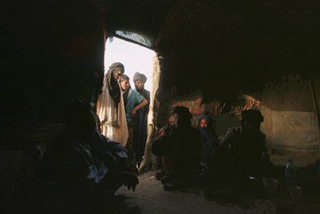
This is Part 2 of an in-depth look at the rebellion in Mali. Tuareg rebels, known as the blue men of the desert, seized the north of that country in March, throwing a relatively stable nation into chaos. As Susan Zakin explains, the conflict reveals a complex web of culture, ambition and unintended consequences. Read Blue Man Coup Part 1: How Gadhafi’s Mercenaries Broke Mali. In Part 2, Zakin discovers what the rebels, smugglers and terrorists are really up to in the desert, and why U.S. counterterrorism types don’t really get it.
The belief that “ungoverned spaces” such as the Sahara provide “safe havens” for terrorist groups to flourish resulted in several major changes in U.S. foreign policy after 9/11. In 2002, the U.S. set up the Pan Sahel Initiative, renamed the Trans-Sahara Counterterrorism Initiative in 2005. The aim was to train the military from seven “willing” Saharan countries and partner with them to fight terrorists. In 2007, the Pentagon set up a separate command structure for Africa, signaling a new focus on the continent.
Initially, the Trans-Sahara effort received $500 million in funding over a five-year period. Most of the money was for military training and weapons, but a portion was dedicated to a “hearts and minds” campaign: revising textbooks, paying for schools teaching a “tolerant” ideology and running moderate radio stations, according to Vijay Prashad, a professor of South Asian history and international studies at Trinity College in Hartford, Conn.
But a gap in funding in the program’s second year excised the “hearts and minds” part. As “counterterrorism” dollars flowed to the Bamako government, and the rebel-held north remained without basic health and education services, both the Tuareg and “young Fulani, Bellah and Songhai scholars from Timbuktu, Gao and Mopti … transferred blame for local conditions in radio programmes and sermons … to the U.S. and its Malian sycophants,” wrote David Gutelius, a development economist who worked in the region, in ISIM Review in 2006.
According to Gutelius, this is just one of many ways that U.S. counterterrorism efforts have backfired.
It’s become a truism to say that border zones comprise a “third” country, shifting ground where cultures hybridize. With power and money concentrated in the south of Mali, the northern Sahara region has largely been left to itself — or, rather, to neighboring Algeria, a richer country whose infrastructure is located closer to the desert. In the past, Bamako’s cash-strapped governments made settlements with the Tuareg by giving them slots in the military, but little else. The solution’s shortcoming became glaringly apparent this spring when, according to Jeremy Keenan, a professor at the University of London’s School of Oriental and African Studies who has spent much of his career in the Sahara, as many as 1,500 Tuareg deserted the army and joined the MNLA rebels.
Professor Peter Chilson, who first lived in West Africa more than 20 years ago and traveled to northern Mali this spring on a grant from the Pulitzer Center on Crisis Reporting, extolls the improvements in Mali’s transportation system as key to the country’s economic growth in recent years (along with gold mining fueled by child labor in the south). But the three main cities in northern Mali — Gao, Kidal and Timbuktu — are still remote and extremely difficult to reach from southern Mali and Bamako.
With bad roads and little government infrastructure, most day-to-day necessities come from Algeria. But there are no formal trade agreements in place between Algeria and Mali, so the only way to obtain these items is via smuggling.
Smuggling is a time-honored tradition in the Sahara, with social and even spiritual overtones. But in the 1990s, smuggling in the Sahara became part of the global economy, as the trade shifted to smuggling cigarettes into Europe via Italy.
For the U.S., it was hard to tell the difference between smugglers and terrorists. This wasn’t just the usual American thickheadedness; many of the “emirs” who headed smuggling operations were affiliated with the GSPC (the Salafist Group for Preaching and Combat), an Islamist militia. The group was fairly low profile until 2003, when Amari Saïfi (aka Abdelrezak el-Para) kidnapped 32 European tourists in Algeria’s southern desert massifs. After the German government reportedly ransomed the hostages, the perpetrators were tracked down in Chad with logistical support by U.S. military forces.
This dramatic four-country chase across the desert helped build support for American involvement in the region. Lost in the excitement were the assessments of experts who described the GSPC as primarily a business operation. That’s not to say the group had no political ties. While cigarettes moved north, guns traveled south. One of the best-known leaders of the GSPC, Mokhtar Belmokhtar, had two nicknames: One-Eye, because he lost an eye fighting in Afghanistan in the 1990s, and “Mr. Marlboro.”
The best evidence that the GSPC had drifted away from its revolutionary roots was the formation, in 2007, of a GSPC splinter group called AQIM (al-Qaida in the Islamic Maghreb). The group had reportedly allied itself with the original al-Qaida at the personal invitation of Osama bin Laden. On April 4, the French foreign minister warned that the group’s involvement in the Tuareg MNLA rebellion could strengthen the terrorist threat worldwide, and urged countries throughout the region to take action.
The reality is that in impoverished, marginalized places with weak governance, people will support virtually anyone who provides jobs, schools and health care, whether through legal or illegal means. Salafist preachers from Pakistan arrived in northern Mali in the 1990s, making inroads in both the GSPC and among some Tuareg. But old habits die hard, and longtime observers believe that the business of AQIM, and that of the less well-understood Islamist splinter group Ansar Dine, which espouses the institution of Shariah law throughout Mali, still comes down to business — controlling, or at least getting a good hunk, of the Sahara’s trade.
Only now the business of the Sahara is smuggling cocaine, human trafficking and, increasingly, kidnapping.In 2009, a Boeing 727 crash-landed in northern Mali, where “an undisclosed but by all accounts significant quantity of cocaine” was offloaded. The smugglers, who had flown from Venezuela, torched the jet. The burned hulk was found abandoned in the desert.
This watershed event was a signal that the days of cramped Beechcraft three-seaters are long gone; drug smugglers have gone global, with transatlantic ships and corporate and commercial jets. West Africa is a major crossroads for the international cocaine trade. The United Nations Office on Drugs and Crime estimated that in 2007, 40 to 50 tons of cocaine was funneled through West Africa, worth an estimated $1.8 billion at European wholesale prices. But the real volume is believed to be much higher. Perhaps the best gut-level index is the construction industry in the Senegalese capital Dakar, where the economy is nose-diving, yet white concrete mansions are rising along the coast at record speed.
Along with Nigeria, Guinea and Guinea Bissau, Mali is a route for shipments from the transit hub of Dakar to Europe. As much as 80 percent of the cocaine seized in Western Europe is believed to have crossed Mali. Drugs and politics are intertwined on both sides of the equation. Colombia’s rebel group FARC trades cocaine for arms, with the reported involvement of government figures. In Mali, the trade is dominated by emirs like Iyad ag Aghaly, one of AQIM’s leaders. Keenan is sometimes accused of being a conspiracy theorist, but he has spent considerable time on the ground in the Sahara. The professor believes that Aghaly is partners in the cocaine trade with Algeria’s secret police.
The Algerian government explained its army’s presence in the north of Mali in December as an effort to combat AQIM, but Keenan says that the Algerians were on the ground to protect their stake in the drug trade from the Tuareg MNLA.
“Indeed, the MNLA has said that the reason why AQIM is protected by both Algeria and Mali is because AQIM is a cover for the massive billion-dollar cocaine trafficking industry controlled by rogue elements in the political-military elites of both countries and which has turned Mali into a ‘narco-state,’ ” Keenan wrote.
To add to the intrigue, economist Gutelius also heard rumors that the Malian government had made deals with radical Islamists in the north to suppress the nationalist element of the Tuareg movement.
The drug trade remains lucrative, but Gutelius said that a U.S.-backed crackdown on drug smuggling by the Malian government has shifted much of the Sahara’s criminal activity to kidnapping. After AQIM claimed responsibility for kidnapping four Europeans in 2009, Daniel Benjamin, coordinator of counterterrorism at the U.S. Department of State, wrote that AQIM was “financially strapped, particularly in Algeria, and unable to reach its recruiting goals” so it was becoming reliant on kidnapping Westerners. Since 2009, kidnappings have decimated tourism in the Sahara — yet another blow to the region’s above-ground economy.
Two of the victims were not mere tourists. Philippe Verdon and Serge Lazarevic might be described as two characters in search of a coup — French nationals who are either mercenary soldiers themselves or claimed ties to mercenaries. Verdon, who once ran an airline in Madagascar, claims to know the legendary mercenary Bob Denard and was last seen with an Israeli general allegedly discussing the use of soldiers of fortune in Libya. Lazarevic reportedly owns a security company in France and is wanted for questioning in Kosovo. He is believed to have recruited mercenaries for former Zaire President Mobutu Sese Seko in the ’90s and is also thought to be cozy with French intelligence. Last November, the two men arrived in Mali, ostensibly to work on a cement project, and were promptly kidnapped by AQIM members.
France’s role in Mali has been fairly quiet, but few believe the country ever willingly relinquishes control of its former colonies. Under the Obama administration, the U.S. has stepped back from meddling in the Sahara, and in terms of outside influence, Gutelius, among others, reports that it’s France’s game. Although there’s no evidence that Verdon and Lazarevic had the Sarkozy government’s imprimatur, there is more than a whiff of an old Frederick Forsyth potboiler in their travails.
But the majority of AQIM’s kidnapping victims have been innocent: aid workers, tourists and missionaries. The group is implicated in the deliberate killing of at least 10 European civilians and the kidnapping of half a dozen Europeans.
“I think it’s part of this larger story of increased competition in the Sahel,” Gutelius said. “You’ve got higher-priced commodities. Instead of guns and cigarettes, you’ve got people. When risk goes up, so do prices.”
When the game changed to kidnapping, Gutelius said the balance of power among the smugglers in the desert shifted. Old school GSPC emir Belmokhtar, for example, considered it an affront to his power base and “felt a bit threatened.”
“He wasn’t into the whole kidnapping thing,” Gutelius said.
Are the emirs of the Sahara criminals or revolutionaries? A little bit of both, probably. Stephen Harmon, a professor at Kansas’ Pittsburg State University and a specialist in West African Islamist history, is convinced that the GSPC and AQIM are more concerned with their illicit business than with overthrowing the Algerian government or jihad. In the Concerned Africa Scholars Bulletin, Harmon argued that the U.S. and Algeria have exaggerated the threat posed by these groups to justify an American military presence and, in Algeria’s case, the continued rule of an authoritarian government.Harmon’s analysis will sound familiar to anyone who has followed U.S. foreign policy in Latin America, where for decades the U.S. propped up repressive dictatorships to buttress its “sphere of influence.” In Mali, and in Africa generally, U.S. counterterrorism efforts have bolstered the arsenals of unpopular, corrupt and repressive regimes, inadvertently creating even more support for “terrorist” organizations.
The real problem for the U.S. may be that there are no white hats in the desert. But if anyone is sympathetic in this scenario, it’s the Tuareg. Alliances between the Tuareg resistance and radical Islamists in northern Mali appear to be tactical and easily broken, and tensions between these groups outweigh their commonalities. The overarching goal of most Tuareg is simply to survive, while preserving their culture. And the biggest threat to the Tuareg’s survival is not Mali’s current political predicament, but oil, gold and uranium.
It’s hard to dismiss the nagging suspicion that at the crossroads of the Sahara, symbolizing the flux of globalization itself, it’s all about the Benjamins for Islamic freedom fighters and Great Satan Americans alike. The economic stakes in northern Mali are potentially enormous. It may be one of the world’s poorest countries, but Mali is also the third-largest producer of gold in Africa. Canada is the major player, with at least two corporations, Iamgold and Avion Gold, engaged in mining operations in the south. With gold reserves waiting to be tapped in the north, Mali was selected by Canada in 2009 as one of six African “countries of focus” fpr Canadian aid.
There are likely to be even bigger stakes in oil, uranium and bauxite. Exploratory drilling showed promise in the north’s Taoudeni basin, at Mali’s border with Mauritania and Algeria, as early as the 1970s. Algeria’s national oil company, Sonatrach, and Canadian owned Selier Energy bought significant stakes in the region in 2007, but those projects are on hold because of the recent instability.
Oil tends to get most of the attention (“It’s all about oil!”) but France is heavily dependent on nuclear power and already has a major interest in uranium mining in the region. It’s no coincidence that the Bush administration’s pretext for the Iraq War involved a false story that Saddam Hussein was importing uranium from neighboring Niger, where the French company Areva has mined more than 100,000 tons of uranium since 1968, most of it going to power the country’s 58 nuclear reactors.
“Niger is to the nuclear industry what Saudi Arabia is to the oil industry,” said Okey Iheduru, a professor at Arizona State University who consults on risk assessment. It certainly hasn’t been lost on the MNLA fighters that in Niger, uranium mining takes place on traditional Tuareg land, and Tuareg miners, some of whom begin working as young as 11, are exposed to high levels of radiation.
It sounds like a graffiti by Banksy, or perhaps a line from “1984,” but with massive, potentially unregulated mining and oil drilling on the horizon, the motto for the Tuareg insurgents should be: “Fear Peace.”
Instability may keep the oil and uranium companies at bay but at a price. Successive droughts over the past decade — Niger saw a 70 percent drop in average precipitation in 2009 – had made life in the Sahara increasingly difficult even before the events of this spring.
Baz Lecocq, a lecturer at Belgium’s Ghent University and a well-regarded commentator on the Sahara, recently wrote of an impending crisis. “This year, there is no food surplus and no pasture left to sustain people and herds through the heat in northern Mali,” he wrote on the website African Arguments on March 30. “Those who have not already fled the fighting in early January will have a very hard time getting out now. … [T]he drought of recent years is building up to a hunger season that could well become a famine on a disastrous scale.”
If you think Bamako is hot in April, Lecocq warned, try Kidal in a shady noon at around 130 degrees Fahrenheit.
If we have learned anything, it is that these crises are neither natural nor inevitable, but the product of egregious mistakes repeated so consistently that starvation in Africa has become our era’s ritualized tragedy, a performance of suffering that offers those in the West an emotional rush but no challenge to understand how the debacle occurred or to face their own countries’ roles in it.
In the face of an uncertain future, the persistence of Tuareg spirit is both comforting and disturbing, a harbinger of an increasingly borderless world that is not ungoverned, but whose rules and boundaries may be determined by varieties of free trade that Milton Friedman never imagined.
“We are military artists!” Abdallah Ag Alhousseyni, one of Grammy Award-winning Tuareg band Tinariwen’s guitarists and singers, told a journalist from Algérie News in the spring. “Today, if we see that our brothers need fighters rather than musicians, we will go to the front, because we are always ready to answer the call of the preservation of our land, our values and our culture. This is what we do through music, and we will do it again with arms!”
This is Part 2 of an in-depth look at the rebellion in Mali. Rebels seized the north of that country in March, throwing a relatively stable nation into chaos. As Susan Zakin explains, the conflict reveals a complex web of culture, ambition and unintended consequences. Read Blue Man Coup Part 1: How Gadhafi’s Mercenaries Broke Mali.
Your support matters…Independent journalism is under threat and overshadowed by heavily funded mainstream media.
You can help level the playing field. Become a member.
Your tax-deductible contribution keeps us digging beneath the headlines to give you thought-provoking, investigative reporting and analysis that unearths what's really happening- without compromise.
Give today to support our courageous, independent journalists.
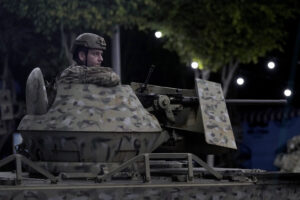
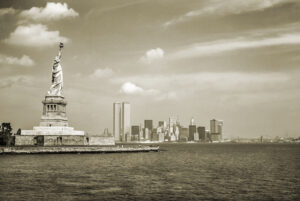
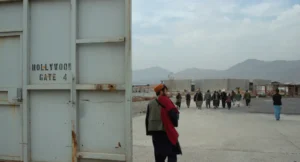
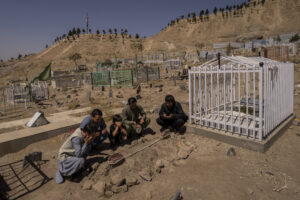
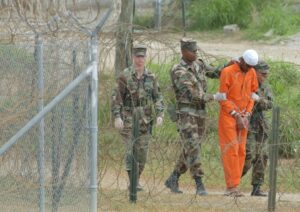
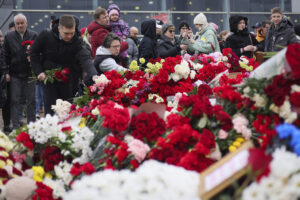


You need to be a supporter to comment.
There are currently no responses to this article.
Be the first to respond.